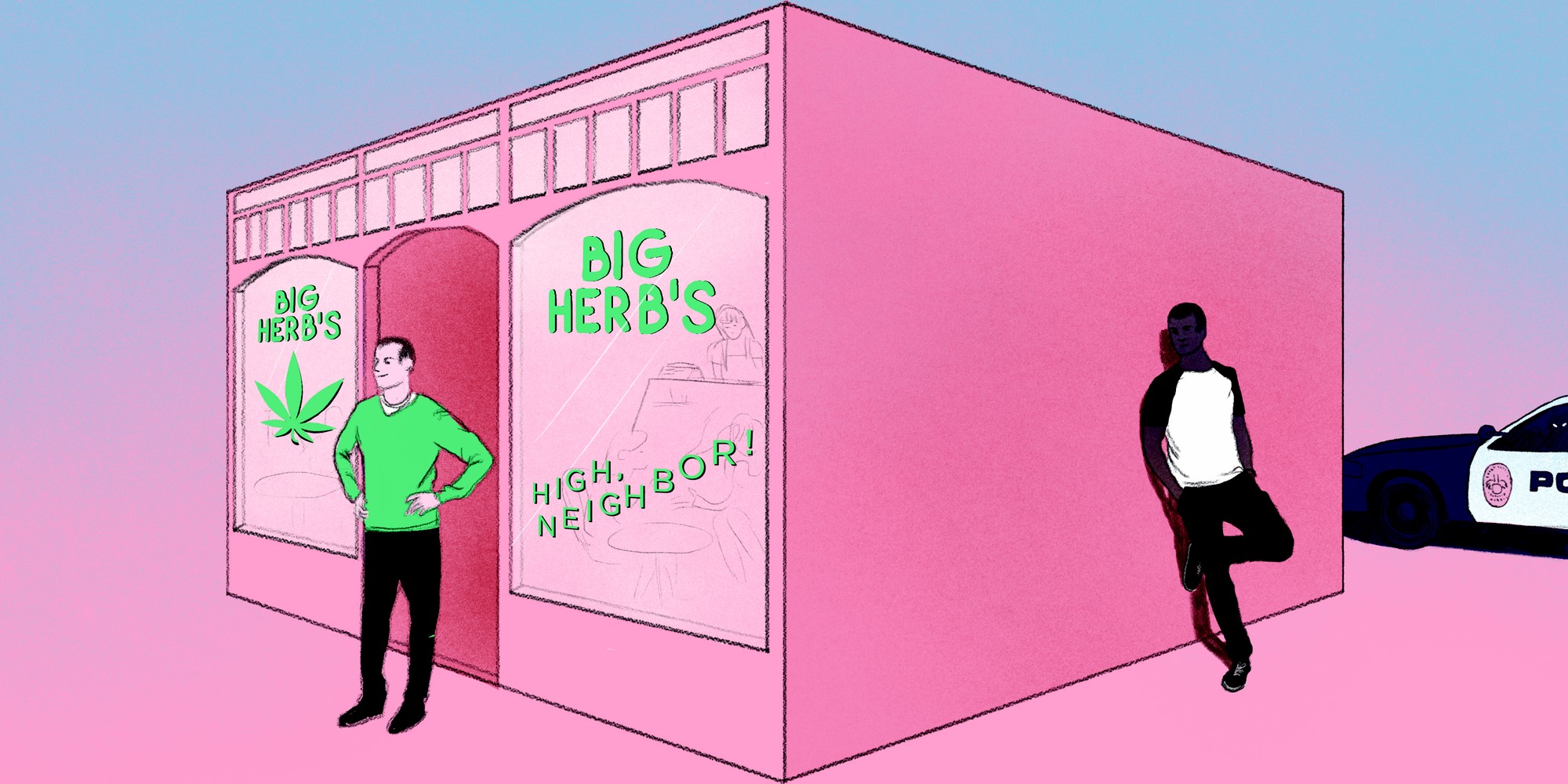As marijuana has become legalized in more and more states, ambitious entrepreneurs have taken note. Like the gold rush of the early 20 th century, many are flooding out West, after financial gains from the bustling recreational drug market of California, Colorado, Oregon, and Washington. Success stories abound, especially in California, a vast and lucrative market that brought in $2.7 billion in medical marijuana sales last year alone.
Yet forty years after the War on Drugs decimated black and Hispanic communities with tough on crime, zero tolerance, three-strike laws that sent non-violent offenders to prison—the irony of this newfound boom is sharp. The reality of today’s burgeoning legal drug industry is that mainly white males are poised to get rich selling cannabis across the United States, benefiting from a trade whose criminalization put hundreds of thousands of black and Hispanic people in prison.
Post-Broken Windows, a police policy that disproportionately targeted African-Americans despite the fact that blacks do not use or sell drugs at higher rates than any other race, the prison population jumped to well over one million inmates, with black people making up more than a third of drug-related imprisonments . Look at it this way: one in three black boys is likely to go to jail, especially for a drug-related offense, in his lifetime, as opposed to one in seventeen for white boys (and one in six for Hispanic/Latino boys). And since many laws for legal marijuana growth ban citizens with a criminal record from selling, blacks and Hispanics—who are more likely to have criminal records, thanks to the discriminatory policies like Broken Windows —are pushed out of the new business boom.
The fast-growing legal marijuana business is also the newest part of an agricultural industry that predominantly favors white growers and farmers, and has been doing so for years . In 1999, the United States Department of Agriculture (USDA) was found guilty of racial discrimination against African-American farmers , paying out almost $1 billion to date.
In Florida, black farmers are currently fighting a 2014 bill while requires that growers must have owned or operated a registered nursery for at least 30 consecutive years in order to sell medical marijuana. Bills like this one, which require farms to be of a certain size or age, automatically rule out smaller, newer farms started by minorities and younger growers. The overlap in time with the proven discrimination by the USDA also effectively shuts black farmers who were often unable to own farms 30 years ago out of Florida’s growing legal marijuana trade.
 The new marijuana business leaves many people of color on the sidelines. Illustration by Laura Lannes
The new marijuana business leaves many people of color on the sidelines. Illustration by Laura Lannes
Studies have also shown that start-up costs for a marijuana business average $250,000 , a near-impossible amount for many black Americans to raise due to an ever-widening racial wealth gap (African Americans have a median income of $7,113 to the white average of $111,416, according to Forbes ). The centuries-long head start that provided many white Americans with generational wealth and property gives white farmers—in particular, white males—an immense head start in the legal marijuana industry.
This issue has found its was up to the highest echelons of American politics several times in recent years. An Aide for President Richard Nixon recently revealed that the War On Drugs was largely fabricated as a way to vilify blacks and anti-war hippies, who were associated with drugs in the court of public opinion, and both Hillary and Bill Clinton have recently been taken to task by activists for their involvement with the Violent Crime Control and Law Enforcement Act of 1994 . The act kicked off the War on Drugs and specifically targeted black communities, stoking fears about black “super predators”— a hot-button term coined by criminologist and political scientist John DiIulio in 1995 to describe hyper-violent kids with no sense of morality —and painting a picture of violent black youth out of control and hyped up on drugs. While the Clintons did not mention race in the Crime Act of 1994 or in any subsequent speeches using the term, DiIulio’s theory specifically stated that the problem of super-predators would be highest in black, inner-city neighborhoods.
In perhaps the least surprising twist, the legalization of marijuana and booming cannabis industry in the United States has not affected the racial gap in drug-related offenses, even as the War on Drugs has been ruled racist and counterproductive and young white Americans have become the face of both marijuana sales and drug addiction. Blacks and Hispanics, who are not more likely to use or sell drugs than white people, are still arrested for drugs at twice the rate of white people, even in places like Washington and Colorado, where marijuana has been legalized. They also still face disproportionate sentences for drug-related offenses.
So, what can be done?
The most obvious first step would be to relax exclusionary laws that are based on criminal convictions, especially for people whose previous crimes involved selling now-legal marijuana. Leveling the playing field by allowing people with experience in the marijuana industry to, you know, legally sell marijuana could give minorities a huge space to jump into the industry. But we also must begin to face the racist legacy of the War on Drugs head-on. The unconscious biases, stigmas, and stereotypes continue to mark black smokers, growers, and sellers as “thugs”, “super predators”, and “drug dealers,” while white smokers, growers, and sellers, are seen as hippies, free-spirits, and now, savvy entrepreneurs in the great Green Rush.










